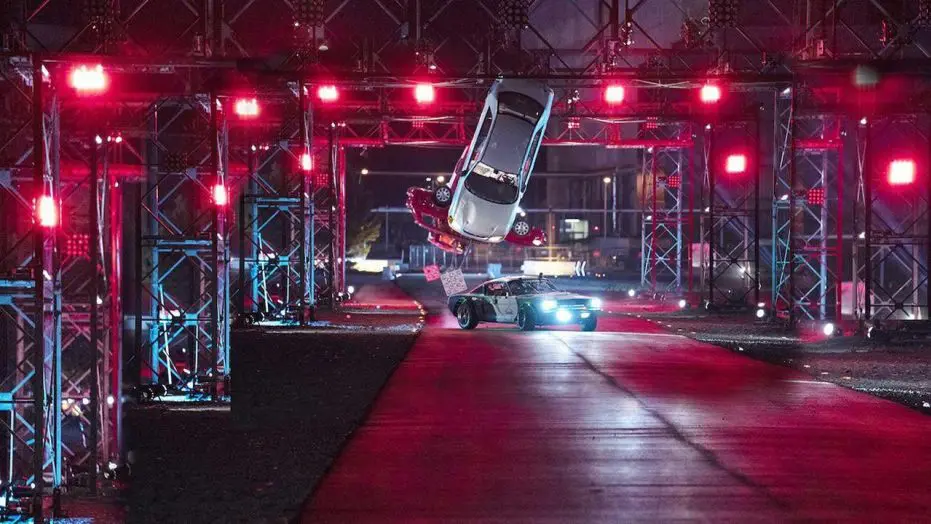Summary
A motoring show meets the insane feats and reality-TV trappings of Ninja Warrior to enjoyable effect in Netflix’s new Original Series.
I was wondering who the target audience for Hyperdrive might be. It might be everyone. The new ten-episode original reality series will doubtlessly appeal to petrolheads, with its custom-made, souped-up speed-machines and appreciation for various driving disciplines, from rallying and drifting to spinning and dragging. Anyone out of their depth with that kind of terminology will still be entertained by the action-y theatrics put together by professional racer and stunt coordinator Andrew Comrie-Picard, who has worked with the show’s co-creator, co-producer Charlize Theron. And everyone else will likely buy into the soapy reality-TV profiling of the competitors. It has all the essential elements of any other competitive show but with the added bonus of insane — and relatively fresh-feeling — automotive madness.
Theron’s isn’t the only name that stands out as being a bit unusual. For Hyperdrive Netflix has assembled a hosting team that includes sports broadcasters Mike Hill and Lindsay Czarniak, racing analyst Rutledge Wood, and UFC Hall-of-Famer and former Middleweight Champion Michael Bisping. It’s an eclectic mix of names, but then again it’s a bonkers show, with increasingly wild race tracks built into a 100-acre industrial complex in Rochester, N.Y.
That complex is drenched in neon, giving Hyperdrive the gaudy aesthetic of the Need for Speed: Underground games or early instalments in the Fast & Furious franchise. Setting the whole thing up and capturing the action must have been an incredible technical undertaking. Tasks range from swinging a car from reverse into drive and doing donuts to ascending and descending a huge see-saw dubbed the Leveler, and there’s more besides I won’t spoil. It’s wild and feels like a genuinely innovative expansion of the American Ninja Warrior format. And it really works.
Hyperdrive is a love-letter to driving as a tremendous skill, and perhaps even an art form, but it also has a reality-TV framework as finely-tuned as the competitor’s vehicles. You’ll buy into the racers and their various backstories, and begin to understand the strengths and weaknesses of their unique rides and specialist styles. The impressive technical underpinnings eventually give way to the drama of real-life struggles to succeed, to prove a point, to earn validation, and all the other complex reasons people find to put themselves through rigorous competition. This will undoubtedly find an audience on Netflix.




